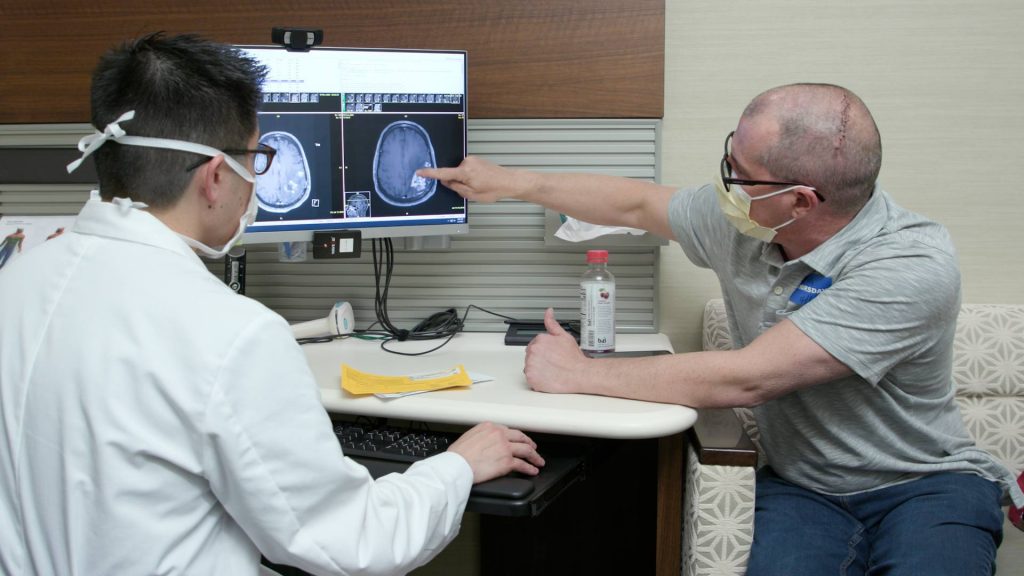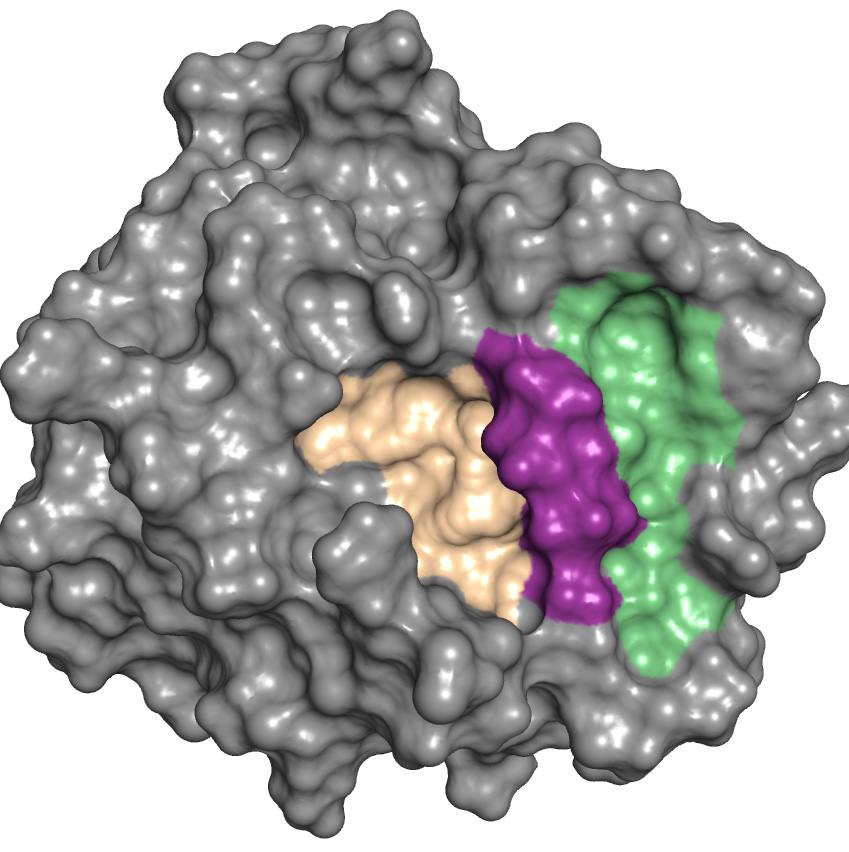
Had it not been for the persistence of a co-worker, Jeremy Paterno might be living a different journey.
It was the first Tuesday in 2020 when Jeremy Paterno, a photographer at Mayo Clinic in Florida, began noticing some small oddities.
"That day, I had a couple flighty moments where my right hand was off, like when I got in the car, but I missed the ignition when trying to insert the key," says Jeremy, a father of two girls, who has worked on the Florida campus since August 2011.
Over the next two days, his symptoms continued. "I thought it was vertigo as my spatial awareness was off. I'd reach for something and be off by a few inches," Jeremy recalls.
At the insistence of a colleague, he made a lunchtime appointment with his primary care physician. That weekend, Jeremy found himself inside an MRI tube. By the following Tuesday, he was undergoing brain surgery.
Doctors had identified a golf-ball-sized mass in Jeremy's brain. Almost overnight he became one of the 240,000 people worldwide diagnosed with glioblastoma, the most common and aggressive type of brain cancer.
Dogged determination
As Jeremy began chemotherapy and radiation, he continued to work, though at home as the COVID-19 pandemic took hold.
He received good news at his six-month scan and the family hoped to celebrate the holidays together. But glioblastomas are tenacious.
Just before Christmas, Jeremey had a seizure. The tumor had returned. More chemotherapy followed but the tumor still grew. Jeremy underwent an awake craniotomy in March 2021. He also enrolled in a clinical trial but, unfortunately, the tumor continued to persist.
Side effects from the medications brought more challenges, affecting Jeremy's speech and making it difficult some days for him to enjoy activities with his family.
Documenting hope
As someone whose job centers around preserving memories, Jeremy was not eager to talk about his diagnosis or experience at first. "It came about so quickly, so in the beginning, I didn't really want to talk about it at all," he says.
Eventually, though, Jeremy realized there might be value in documenting part of his journey. Jeremy and his wife, Kelly, invited his Mayo Clinic coworkers to record parts of his care.
"When you're on a journey like this ― with this type of diagnosis ― you have to be able to find hope," says Kelly, who also started a "Team Paterno" Facebook group to keep friends and family up to date on Jeremy's progress.
While Mayo Clinic led his medical care, the Paternos identified other resources to help as they navigated the unknown. With support from the Brain Tumor Network and friends and family, they found renewed strength. Jeremy embraced a healthier diet and regular exercise, as well as holistic modalities, including meditation.
"All of the pieces are important for patients, but everybody has their own pace," says Jeremy, who began a new immunotherapy treatment this past summer.
"Though we've all been through different life experiences, Jeremy was inspired to use his particular journey not only to get a message to others going through cancer but to the medical community. Things like diet, exercise, and meditation have given us a feeling of control and have significantly helped our family navigate this diagnosis. These therapies are equally as important as the medical components of treatment," says Kelly.
Jeremy continues to make integrative health practices a part of his daily routine. His most recent MRI showed that the tumor was stable. And although no one knows exactly what the future holds, the family is looking forward with a positive outlook.
Watch Jeremy's Journey in this video.







